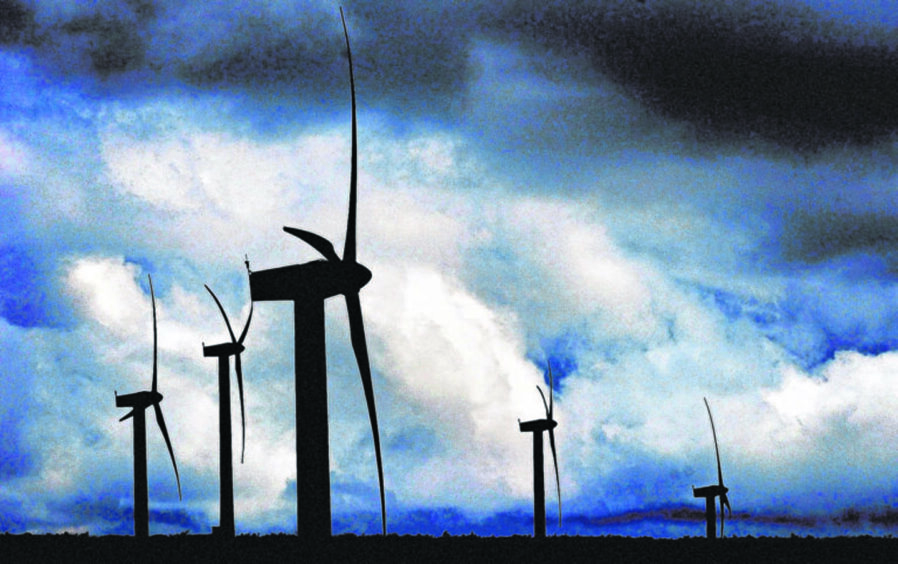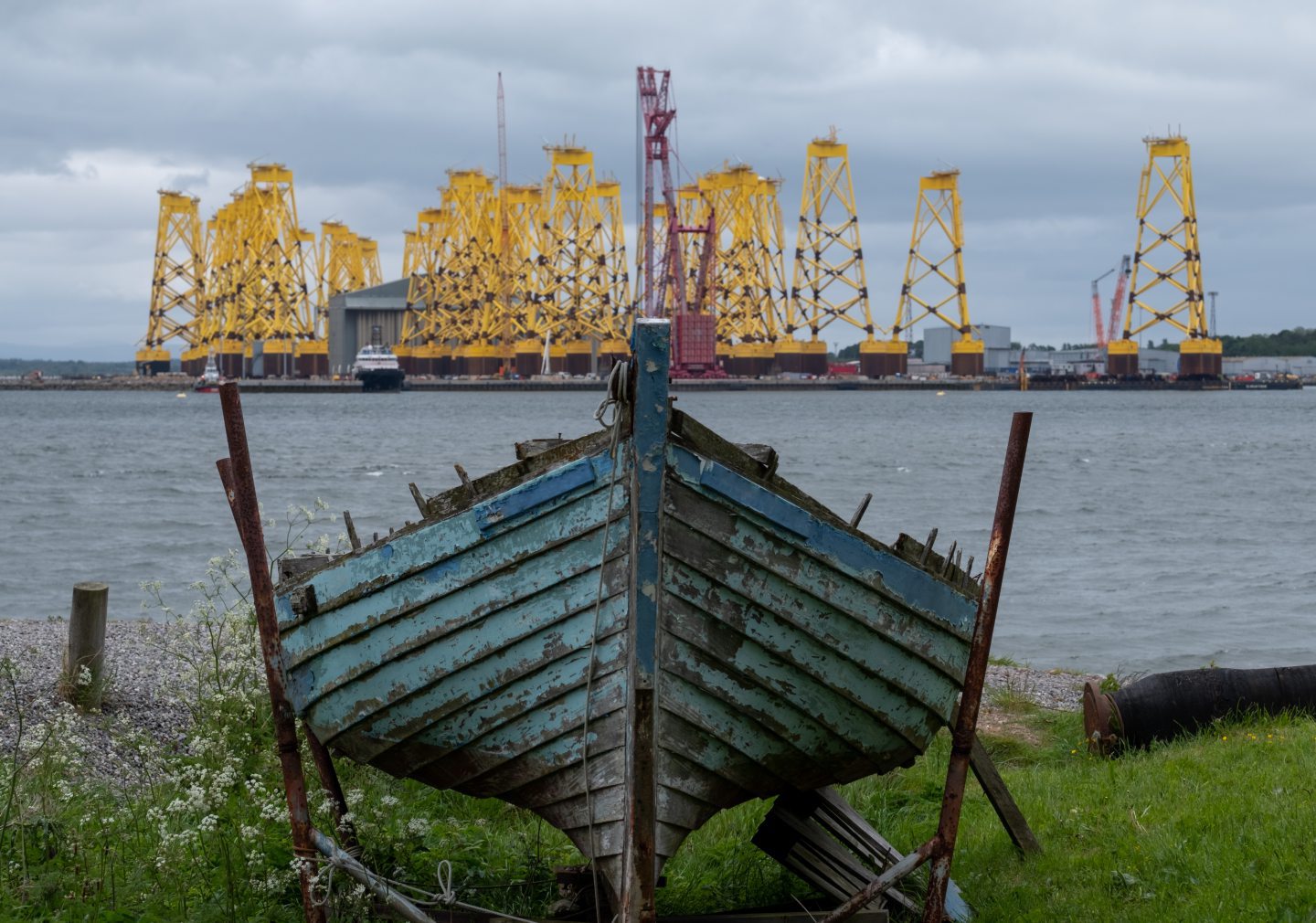
Over 3.5GW of global offshore wind capacity will reach the end of operational life by 2035 if no other action is taken.
That’s the message from the UK’s Offshore Renewable Energy Catapult, in a report produced last year.
Most of those turbines are is in North-west Europe; primarily the North Sea, the largest share being in UK waters. Average lifespan is 20-25 years.
ORE calculates that around 600 turbines will get the chop by 2030. Push on another five years and EV extrapolation seems to point to around 8-900 being removed by 2035.
It seems a lot but its roughly equivalent to only two or three gas-fired/multi-fuel power stations such as Peterhead.
These numbers take no account of repowering, improvements in maintenance and repair regimes or economic expediency.
In this regard, North Sea oil & gas sets an important precedent. A huge number of fields are now well past original expectation and there are many platforms which had a design life of 20-25 years but which are now 40 years old and more.
And right now, expediency has thrown a spanner into the works of both industries because of Russia’s war with Ukraine. This has led to a dramatic rewrite of the global oil & gas supplies map, triggering an acceleration of the green energy push.
It is why the UK government, for example, is resetting capacity targets and overhauling the projects rule books for offshore wind, as are neighbours across the North Sea, and why it is pushing oil & gas operators to maximise production, regardless of global warming.
In the UK’s Offshore Wind Sector Deal published in March 2019 the prior target of 30 GW was pushed to 40 GW fixed turbines plus 1GW for floaters.
In April the target was reset again to 50GW fixed and 5GW floaters.
DNV forecasts that the UK offshore wind industry will have around 19.5 GW installed by mid-decade. That leaves only another five years to way more than double that capacity.
Political ambition or panic?
But, as World Wars I and II attest, it is remarkable what can be achieved in war-driven deep crisis.
EU neighbours have dramatically ramped up their targets too.
In February, The Members of the European Parliament (MEPs) agreed under the EU Offshore Renewable Energy Strategy to set a 2030 target of at least 60GW and 300GW by 2050.
The EU also plans to develop at least 1 GW of ocean energy and other emerging technologies by 2030, and 40 GW by 2050.
In May, via the Esbjerg Declaration, North Sea littoral states Belgium, Denmark, Germany and The Netherlands agreed to jointly develop 150GW of new capacity in their waters by 2050, together with the creation of “energy islands” and export grid build-out.
They also strengthened their commitment to offshore hydrogen and plan to build 30GW of electrolyser capacity by 2030.
Then, in September, The EU refined and further reinforced its offshore energy targets.
Energy ministers linked to the North Seas Energy Cooperation (NSEC) and the European Commission have pledged a “significant increase in their collective ambition”.
The nine have agreed to reach at least 260GW of offshore wind energy by 2050. They are: Belgium, Denmark, France, Germany, Ireland, Luxembourg, the Netherlands, Norway and Sweden.
This will represent more than 85% of the EU-wide ambition to reach 300GW by 2050.and is 17 times more than all of the EU’s current offshore wind capacity.
The nine also laid out intermediate targets of 76GW by 2030 and 193GW by 2040.
The numbers are huge and smell of political ambition driven by near panic.
Overbuilt and overcapacity
Judging by the multiple dramatic decisions made by EU member governments and the UK regarding the massive impact of the invasion of Ukraine on key commodities like copper, lithium and wheat plus energy, the key political driver is Extreme Fear … not to get trapped by Russia’s aggression.
When it comes to the latest commitments regarding offshore wind, there is the risk that the declarations may lead to significant over-build therefore over-capacity resulting in mothballing and early decommissioning of far from life expired generating plant.
In the UK, there also is the risk that the contracts for difference system, which has over the past decade led to dramatic reductions in the cost of windfarms, especially offshore, will end up strangling innovation, quality and safety. It will simply be the cheapest deal.
Expediency will take charge and, in turn, this may have serious impacts on the drive to achieve a viable circular economy when it comes to offshore wind.
In theory, everything installed on the UK Continental Shelf will have to be removed.
That was the commitment made by Big Oil when it sought the key of the door to the North Sea, but has turned out not to be the case.
Fishermen especially fear similar treatment from Big Wind, the North Sea footprint of which is destined to be far larger than that of Big Oil.
ORE Catapult has examined what it sees as the options ahead.
A cost-benefit analysis of five end-of-life scenarios was conducted for a representative UK offshore wind farm of 35 turbines (6MW rating) reaching its 25-year operating life in 2040.
The scenarios were full removal; partial removal; full repowering; partial repowering and life extension.
ORE’s analysis shows that partial repowering with a 10MW turbine upgrade in a 210MW offshore wind farm site offers the highest NPV (net present value) of £221million, extending the wind farm’s life for a further 25 years.
Life extension is the second most economically attractive option with a £148million NPV while having the lowest extra cost among all scenarios but also preserving the same annual electricity production for a further 10 years.
Compared to partial repowering, the cost of replacing foundations and cables reduces the return the developer/operator can expect from full repowering to £105 million.
Total and partial decommissioning do not offer any wind farm revenue return to the developer/operator.
There is no mention of what the impacts on other sea users could be as a result of leaving infrastructure partially in place. In that regard the analysis displays partiality that favours the wind farm developer/operator.
ORE admits: “There is currently no standard legislation to specify the best practices after operational life end with decisions strongly driven by the physical conditions, theoretically admissible lifetimes of turbines, site conditions, country legislation, logistical difficulties and environmental impact.”
The catapult is currently developing an industrywide programme to cover not only the issues and understanding of what decommissioning will mean, but the wider circular economy impacts that component reuse and material recycling might have.
It’s five-year Circular Economy for the Wind Sector (CEWS) Joint Industry Programme aims to bring together ideas and solutions from different researchers, operators, developers and policymakers for the most sustainable practices that can be adopted at the end of a wind farm’s operating life.
Happenstance, it is also developing the UK Floating Offshore Wind Centre of Excellence though for why is a puzzle as none of the wind floater technologies developed and built so far have happened here.
Dr Anne Velenturf, senior research fellow in circular economy at Leeds – who has worked as a consultant for ORE – has personal views about what is presently not right about offshore wind, at least in the UK context.
She told EV: “It is very important for the wind industry to stay open and transparent, and to really deal with the sustainability challenges that they are facing. Credibility and trust are easily lost and very difficult to regain, something fossil fuel companies know all about.”
A couple of years ago, in a formal response to the Scottish government’s consultation on decom, Velenturf warned: “A review of offshore wind decommissioning plans by our team at the University of Leeds revealed that the current guidance for the whole of the UK has resulted in very poor quality decommissioning plans (for offshore wind).”
In other words, the Department for Business, Energy and Industrial Strategy is not doing its job properly.
Velenturf warned: “The Scottish Government should not join a race to the bottom and instead would do better to make sure to deliver against their own priorities in their National Performance Framework.
“Decommissioning programmes should set out the extent of infrastructure to be removed, methods and processes. They should include a base case of all infrastructure being removed, alongside any alternatives that the operator proposes, backed up by evidence and reasoning for the preferred option.”
“If we assume that the guidance has been more or less copied from the guidance provided by BEIS for the whole of the UK, then we can conclude that the guidance is unlikely to achieve any of these aspirations based on the general state of current decommissioning programmes that are publicly available.”
EV wonders whether this is also the case on the other side of the North Sea or whether a more responsible approach to offshore wind sustainablility, let alone decom on its own, is already ordained.
Recommended for you

 © Shutterstock / Lois GoBe
© Shutterstock / Lois GoBe